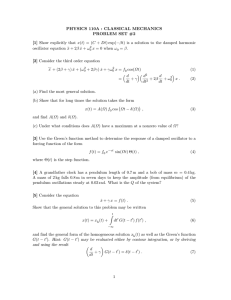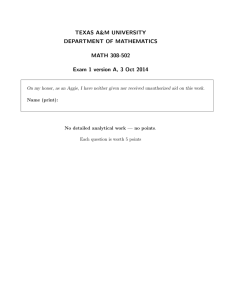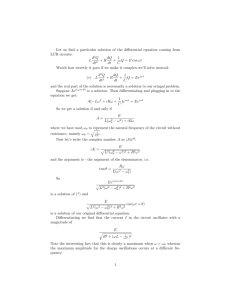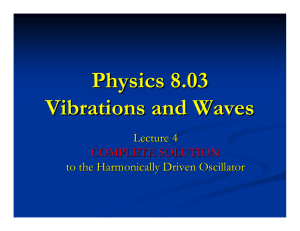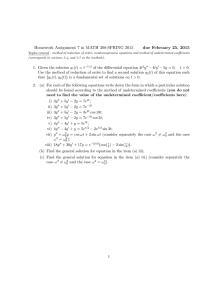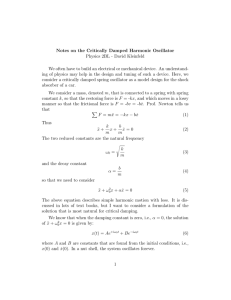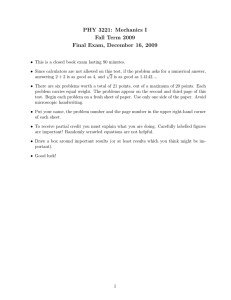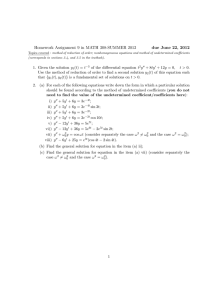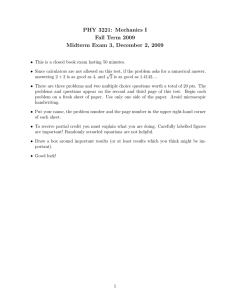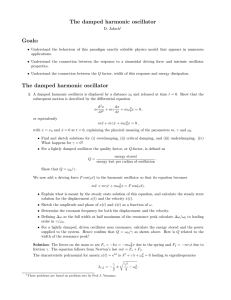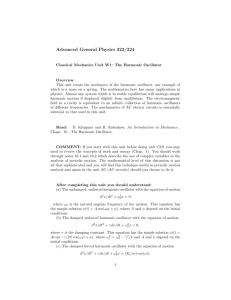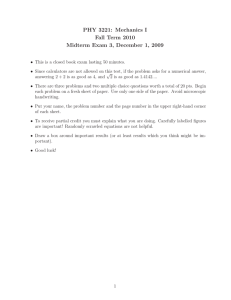Physics 3221 Mechanics I Fall Term 2010 Quiz 3
advertisement
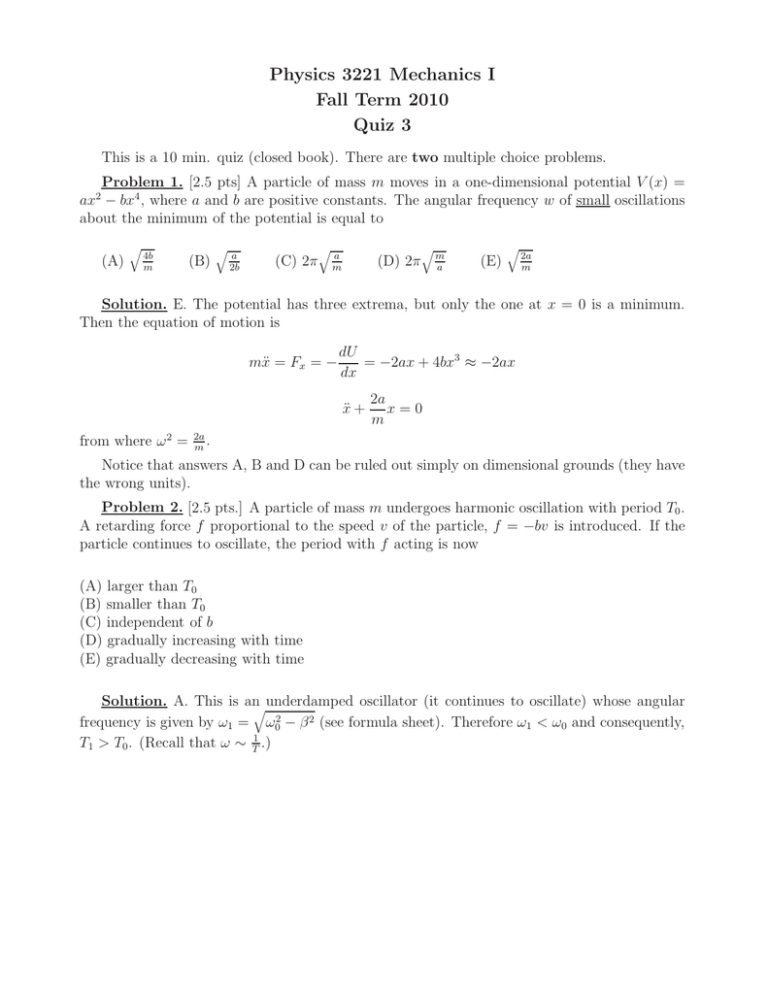
Physics 3221 Mechanics I Fall Term 2010 Quiz 3 This is a 10 min. quiz (closed book). There are two multiple choice problems. Problem 1. [2.5 pts] A particle of mass m moves in a one-dimensional potential V (x) = ax2 − bx4 , where a and b are positive constants. The angular frequency w of small oscillations about the minimum of the potential is equal to (A) q 4b m (B) q a 2b (C) 2π q a m (D) 2π q m a (E) q 2a m Solution. E. The potential has three extrema, but only the one at x = 0 is a minimum. Then the equation of motion is mẍ = Fx = − dU = −2ax + 4bx3 ≈ −2ax dx ẍ + from where ω 2 = 2a x=0 m 2a . m Notice that answers A, B and D can be ruled out simply on dimensional grounds (they have the wrong units). Problem 2. [2.5 pts.] A particle of mass m undergoes harmonic oscillation with period T0 . A retarding force f proportional to the speed v of the particle, f = −bv is introduced. If the particle continues to oscillate, the period with f acting is now (A) larger than T0 (B) smaller than T0 (C) independent of b (D) gradually increasing with time (E) gradually decreasing with time Solution. A. This is anqunderdamped oscillator (it continues to oscillate) whose angular frequency is given by ω1 = ω02 − β 2 (see formula sheet). Therefore ω1 < ω0 and consequently, T1 > T0 . (Recall that ω ∼ T1 .) Formula sheet Simple harmonic oscillator: mẍ + kx = 0 x(t) = A sin(ω0 t − δ) x(t) = A cos(ω0 t − φ) s 2π ω0 = 2πν0 = = τ0 k m Damped oscillator: b ẍ + 2β ẋ + ω02 x = 0, 2β = m √ 2 2 √ 2 2 x(t) = e−βt A1 e β −ω0 t + A2 e− β −ω0 t Underdamped motion x(t) = Ae−βt cos(ω1 t − δ), ω1 = q ω02 − β 2 Critically damped motion x(t) = (A + Bt)e−βt Overdamped motion i h x(t) = e−βt A1 eω2 t + A2 e−ω2 t , Driven oscillator ω2 = q β 2 − ω02 F0 ẍ + 2β ẋ + ω02 x = A cos ωt, A = m √ 2 2 √ 2 2 xc (t) = e−βt A1 e β −ω0 t + A2 e− β −ω0 t A xp (t) = q cos(ωt − δ) 2 (ω0 − ω 2 )2 + 4ω 2β 2 δ = tan −1 q 2ωβ 2 ω0 − ω 2 ! ω02 − 2β 2 ωR Q= 2β ωR = RLC circuit VL = L Gauss’s law Z S dI dt VR = RI ~n · ~g da = −4πG VC = Z V ρ dv q C
